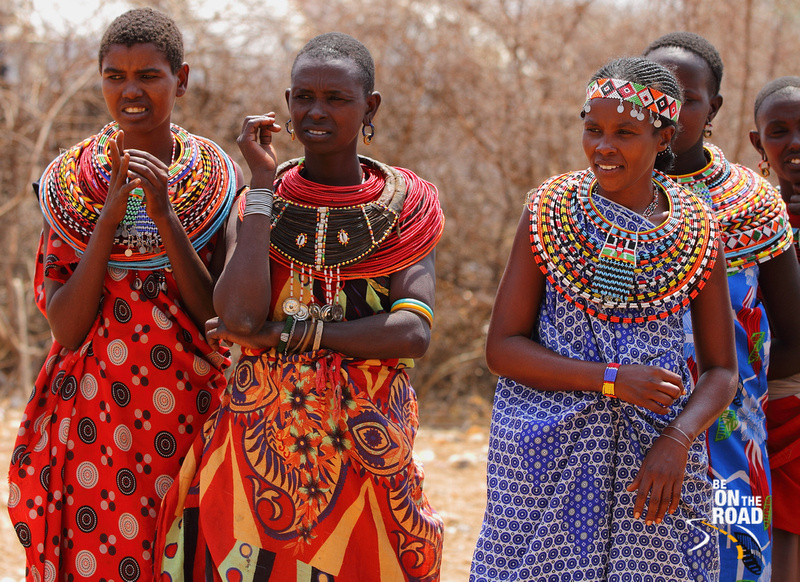
The Samburu traditions and lifestyle are closely linked to those of the Maasai and the Rendille, including clothing; men wear a cloth that is often red with a white band wrapped around their waist; while women wear two pieces of cloth, one wrapped around their waist and the other around their breast.
Like the neighboring Maasai, the Samburu warriors, called Morans, have long hair mixed with red ochre, while women and the elderly have shaved heads.
The distinctive feature of the Samburu is the amount of jewelry, especially colorful multi-beaded bracelets, anklets, and necklaces they use to wear, both men and women.
The Samburu are famous for the countless necklaces that the girls use to wear; these colored multi-bead necklaces are a symbol of beauty and reflect the social status and wealth of the wearer; the Samburu women are very beautiful to look at and are a veritable explosion of colors.
In the Samburu culture the more necklaces women wear the more they are considered beautiful, and it also identifies their wealth and civil status.
The girls receive the first necklaces from their father when they are very young; they are usually red, this means that the father has promised to marry the daughter to an already identified man.
But despite a girl is already committed to marriage, the Samburu teenagers enjoy a fairly broad level of sexual freedom, and girls can have more Moran boyfriends.
The Samburu young warriors also give necklaces as a gift to show their love to a girl or the one with whom they have a steady relationship, this girl in the Samburu language is called nekarai, i.e. not married girl; the necklaces are expensive for their standard of living, i.e. up to 100 US dollars for a single piece.
When a girl gets married she has to return the necklaces to her boyfriend and since then she keeps wearing heavy brass earrings that in the Samburu culture symbolize marriage; whenever she gives birth to a son, she adds a ring to these earrings.
The Samburu women spend much of their time making jewelry, necklaces, anklets, and bracelets with colored beads; in the past, they used colored seeds, pieces of old tires, copper, brass and iron wire instead of beads.
The colors have a specific meaning, white stands for purity and health because it is associated with cow’s milk; black means discomfort; yellow and orange are the colors of hospitality, while red means danger, courage, and unity.
In some cases, the necklaces are used as magical amulets, for example, if a woman is infertile, or presumed as such, she will receive a collar of pearls from the wizard that will allow her to give birth to her children.
By exploring Africa




